- Main Page « Mom and Dad « Their Parents—Our Grandparents « Irma E. Webber Books « About (iii)
IRMA E. WEBBER
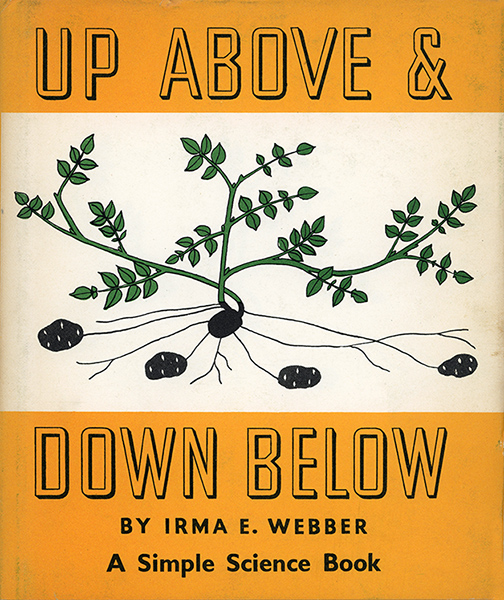 |
 |
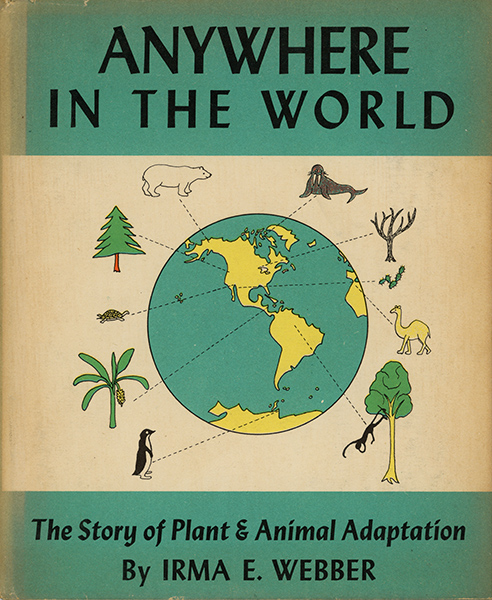 |
 |
 |
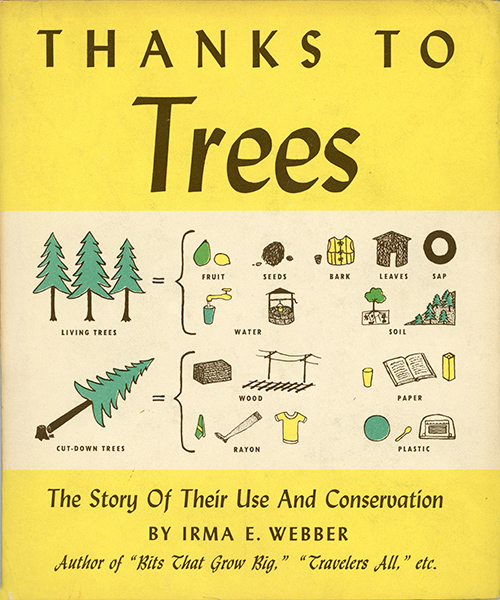 |
Grandma authored six
children's books—five about
plants—published by William R. Scott,
Inc. between 1943 and 1952.
Several of these were translated into in
a number of languages; for example Up
Above & Down Below appeared in
Bengali, Persian and Japanese and
possibly others. Even in English,
different editions have different
subtitles; thus Travelers All is
subtitled "How Plants Go Places," "The
Story of How Seeds Travel" and "How
Plants Move Around"). In a 1962
letter editor John R. McCullough wrote
to Grandma, "Italy appears to have no
trillium and Italy wishes to publish Anywhere
in the World omitting pages 26 and
27 which talks about wood flowers and
leaf cover with reference to the
trillium." Of the books, It
Looks Like This achieved the
widest distribution as it was
republished in 1976 by the International
Society for General Semantics and
subsequently published in various
languages and editions. Useful
insights on these books and the
inspiration for them:
SPEECH
TEXT | ARTICLE
| MORE
|
_____________
|
|
 |
|
|
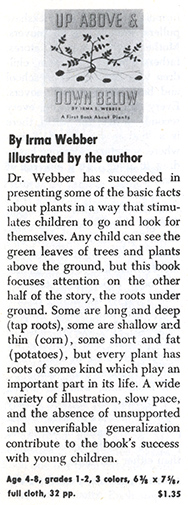
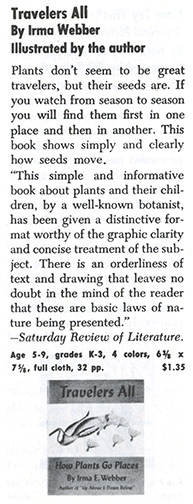
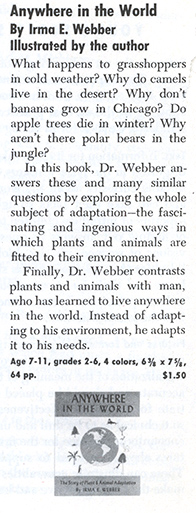 |
|||
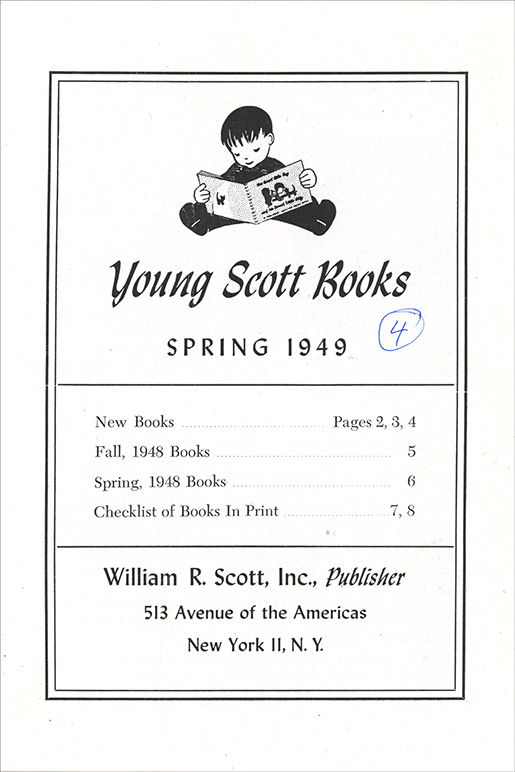 \\ \\ |
|||
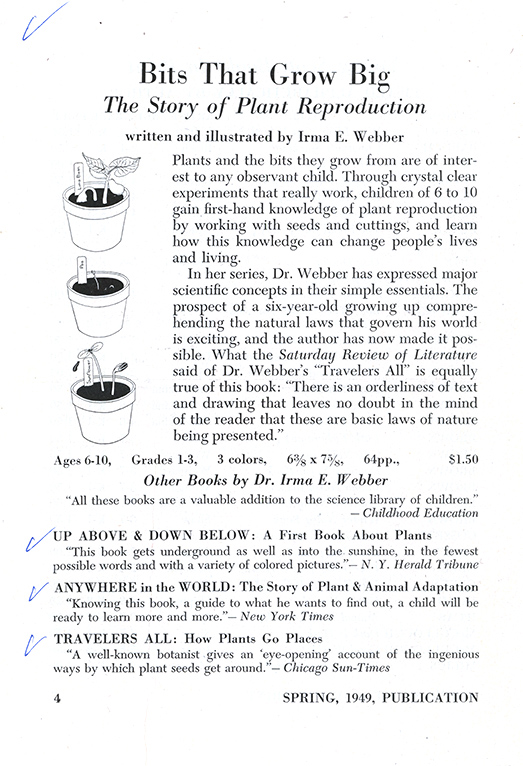 |
|||
ad from Et Cetera: A Review of
General Semantics, Vol. 37, No. 2, Summer 1980.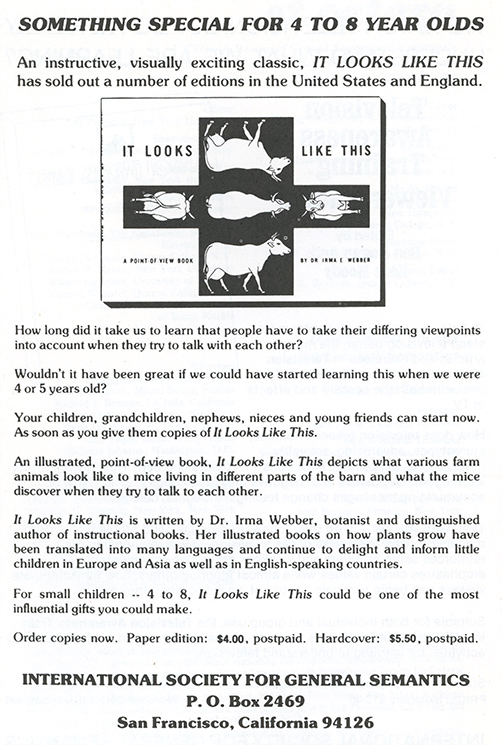 Et cetera - Winter 1978 Maria Urquidi—Esta Cosa Se Ve Asi "This is the first bilingual book published by the Society. Maria Urquidi, our lady in Mexico City, did this excellent Spanish translation. The book is primarily for children as is a gem for opening up perceptions. Reviews have been excellent, with demands starting from schools in U.S. cities with large Spanish-speaking population..." Et cetera - Spring 1981 "Gunter Schwarz, who translated into German Teaching General Semantics...will also translate and publish Classroom Exercises in General Semantics. Dr. Schwarz earlier translated and published for European readers multi-lingual editions of another of the Society's books, It Looks Like This. [German, French, Greek, Turkish, Russian, Spanish, Italian and Croatian]. "Society Director Mitsuko Saito-Fukunoga recently completed a careful Japanese translation (along with extensive explanatory notes) of It Looks Like This. She then found an enthusiastic publisher in Tokyo who has now brought out a beautiful, hard-cover edition of this children's book to be marketed in Japan." Et cetera - Winter 1981 "The International Society for General Semantics has granted Dr. N.H. Atthraya the rights to publish single and multilingual editions of the book, It Looks Like This, by Dr. Irma Webber. The languages into which It Looks Like This may be translated under this agreement include: Hindi, Tamil, Gojarati, Marathi, Bengali and other Indian languages." [IEW note: Bilingual edition English and Tamil (1983), Modern Management Counsel School of Management, Bombay, India]. Et cetera - Winter 1983 "...arrangements are now being made for French, Chinese, Czech and Hungarian editions." |
 |
 |
 |
 |
| article reprinted from Et cetera,
Fall 1981 A WORD FROM THE PRESIDENT The To-Me Principle in General Semantics Through the years "general semantics" has had different significance for different people. Not only have we been told about the subject by individuals who have had varied attitudes toward what its major functions and central concepts are, but perhaps even more important, we have listened with differing perceptions, prejudices, aims and needs. What is useful and meaningful to one of us may be unimportant to another. We probably agree that the subject matter of general semantics is basic to human experience because it has to do with communication among human beings and the relationship between what takes place inside each person and the external world. But the sweep of implications, the total effect of study in this field, will be somewhat different for each student. "General semantics," as a term, seems to share some of the characteristics of a word like "democracy." As we recognize, such words both elicit strong emotions and often have widely different meanings for people. Discussions of them lead to emotional and rather intractable disagreements. Accordingly, it is not strange that when our editor asked for opinions on the relationship of general semantics to other, yet higher order, abstractions such as "religion," "awe," and "morality" he elicited just such responses. All this makes for the kind of excitement pleasing to editors. On the other hand, it interested me that neither our editor nor the discussants very vigorously applied the gentle little verbal tool, to me, which is at the very heart of general semantics teaching. They certainly had a splendid opportunity to do this when treading among these heavenly-high abstractions. For my part, this to-me principle in interrelationships and discussions is an example of how general semantics can be thought of by those interested as indeed "well suited to provide moral direction." This recognition, that one's own opinions are not necessarily shared by others and that another person with a different background of experience and a unique personality might not share one's views, is part of my own notion of what the term "morality" involves. One of the books the Society republished during recent years is concerned with demonstrating to 4-to-8-year-olds the force and logic of the to-me principle. Recently Board Member Dr. Mitsuko Saito-Fukunaga translated Dr. Irma Webber's book, It Looks Like This, into Japanese. It is now published and selling well in Japan. The charming story tells of some little mice in a barn who have a limited view of how cows, donkeys and pigs look because each sees these animals from its own vantage point. When they come together to seek protection from a cat they see, they finally learn that the same beast appears differently from different points of view. Dr. Saito-Fukunaga gave the tale a nice new title and wrote a special postscript for her Japanese readers which she was good enough to translate for me. Here are some excerpts from it: Not only children but we adults as well are often likely to think, "My way of looking at it, or my way of thinking must be correct," and forget that others, too, have their own ways of thinking .... As a result, trivial things develop into emotional issues which break up human relations, and even escalate into international disputes.In a covering letter to me, Dr. Saito-Funaga explains that the difference between U.S. and Japanese cultural patterns was brought home to her during the process of translating the book. I have found that English is far stronger than the Japanese language in terms of pointing out and locating issues, whereas in Japanese the translator should point out the issues along with the situational factors. In the Japanese translation more emphasis was placed on these factors so that children would learn what Dr. Irma Webber wanted to say in the total picture of the situation.If I understand her correctly, this translator was also providing for the situational emphasis in her Japanese postscript. She stresses the importance of the realization of others' viewpoints if we are to prevent "trivial things" from "breaking up human relations," and if "within the family and among friends" one is to have "a happy and peaceful life." With her help we are given a direct experience of the different ways in which, in her words, different cultures "use the language in a communicative situation." We can feel grateful to her for this insight. We come here to another level where the to-me principle is useful. Viewpoints vary from person to person within a culture but there are even more subtle differences between the ways the people of twu cultures look upon a "common" experience. |
